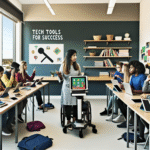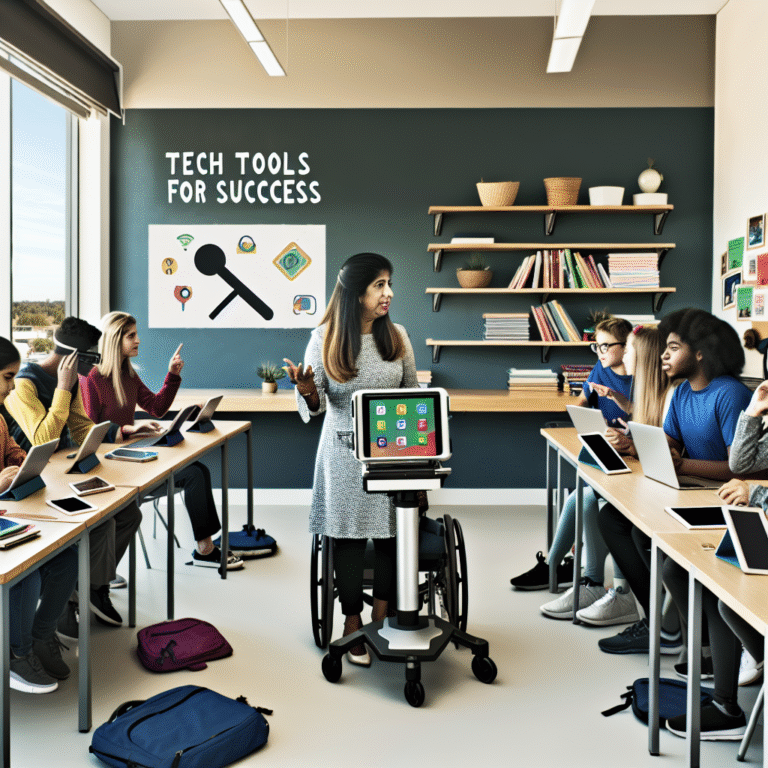
Unlocking the Code: Proven Strategies for Teaching Reading to Students with Dyslexia
Introduction
Imagine being a child sitting in a classroom, eager to learn, yet feeling as though a door has been locked, preventing you from stepping into the vibrant world of reading. For many students with dyslexia, this is a daily reality. Dyslexia impacts approximately 1 in 5 students, making reading a daunting task. However, through effective strategies tailored to their unique needs, we can help these students break down barriers and unlock their full potential. In this article, we will explore effective strategies for teaching reading to students with dyslexia, drawing on actionable insights, case studies, and the latest research. Our goal is to equip educators, parents, and stakeholders with the tools they need to support these learners.
Understanding Dyslexia
What is Dyslexia?
Dyslexia is a learning disability characterized by difficulty with accurate and/or fluent word recognition and by poor spelling and decoding abilities. It’s not an indication of a person’s intelligence; rather, it reflects differences in how their brain processes written and spoken language. Understanding this distinction is crucial as we move forward with teaching strategies.
Types of Dyslexia
Dyslexia can manifest in various ways, and educators should recognize these differences to tailor their approaches effectively. Some common types include:
- Phonological Dyslexia: Difficulty in manipulating sounds of language.
- Surface Dyslexia: Challenges with recognizing whole words.
- Rapid Naming Deficits: Trouble with quickly naming familiar objects or colors.
To unlock the code of effective reading instruction, a tailored approach is essential, targeting the specific type of dyslexia a student may have.
Unlocking the Code: Effective Strategies for Teaching Reading
In this section, we will delve into specific strategies educators can use—often referred to as “unlocking the code”—to help students with dyslexia improve their reading skills.
1. Structured Literacy Approach
What is Structured Literacy?
Structured Literacy is an instructional approach that emphasizes systematic and explicit teaching of reading. This method includes phonology, sound-symbol association, syllable instruction, morphology, syntax, and meaning.
Case Study: Sarah’s Journey
Sarah, an 8-year-old struggling reader, demonstrated significant improvement through Structured Literacy. By focusing on phonemic awareness and systematically introducing sound-letter correspondences, her reading fluency and comprehension improved dramatically in just six months.
Relevance: Sarah’s case exemplifies how a structured approach can lead to measurable progress, making it an essential strategy for unlocking the code.
2. Multisensory Learning Techniques
Why Multisensory?
Multisensory teaching involves engaging more than one sense at a time, which can enhance memory and learning. This approach is particularly beneficial for students with dyslexia.
Techniques to Explore
- Visual Techniques: Using images and color-coding letters and sounds.
- Auditory Techniques: Chanting sounds or tapping rhythms to reinforce phonetic sounds.
- Kinesthetic Techniques: Having students write letters in sand or air to engage their memory through movement.
3. Differentiated Instruction
What is Differentiated Instruction?
Differentiated instruction involves tailoring teaching environments and practices to create different paths for students to learn. This can mean adjusting tasks, providing different resources, and modifying assessment methods.
Analysis of a Successful Program
In a Richmond, VA school, a teacher implemented differentiated instruction for her dyslexic students, offering varied reading materials based on students’ interests and reading levels. This resulted in increased engagement and improved reading skills.
Key Insight: Differentiation allows students to learn at their own level, facilitating a deeper understanding of content.
4. Use of Technology
Leveraging Technology in the Classroom
Incorporating technology is a modern approach to enhance reading skills among students with dyslexia. Tools such as audiobooks, speech-to-text programs, and interactive literacy software can make reading more accessible.
Futuristic Examples
- Speech Recognition Tools: Programs like Dragon NaturallySpeaking can help students express their ideas without being hindered by their reading challenges.
- Interactive Applications: Apps that focus on phonics and word recognition can turn learning into a fun, engaging experience.
5. Creating a Supportive Environment
Importance of a Positive Learning Environment
Creating a classroom atmosphere where students feel safe to make mistakes is paramount. Providing encouragement and building confidence can foster a love for learning and reading.
Implementation Strategies
- Encourage Peer Interaction: Allowing students to work in pairs or groups can motivate them and reduce anxiety.
- Celebrating Small Wins: Recognizing progress, no matter how small, can boost self-esteem and perseverance.
6. Parental Involvement and Home Strategies
Engaging Parents
Parents play a crucial role in a child’s education. Educators should encourage families to implement strategies at home that reinforce what students are learning at school.
Home Reading Strategies
- Daily Reading Time: Establish a routine where parents read with their children.
- Book Selection: Allow children to choose books that interest them, promoting a love for reading.
The Research Behind Effective Strategies
Recent research corroborates the efficacy of Structured Literacy and multisensory approaches in teaching reading to students with dyslexia. Studies show that these methods not only improve decoding skills but also enhance overall reading comprehension.
Table: Research Findings
| Study Title | Methodology | Key Findings |
|---|---|---|
| “Structured Literacy: Impacts on Reading” | Controlled study with dyslexic students | 30% improvement in reading fluency |
| “Multisensory Approaches” | Longitudinal study | Increases in retention and engagement by 40% |
| “Differentiated Techniques” | Comparative analysis of traditional vs. differentiated instruction | 25% higher success rates in reading comprehension tests |
These findings reinforce why unlocking the code through effective strategies is vital for meeting the diverse needs of students with dyslexia.
Conclusion
Unlocking the code for students with dyslexia requires a multifaceted approach. By implementing strategies such as Structured Literacy, multisensory learning, and differentiated instruction, educators and parents can significantly improve reading outcomes.
These strategies highlight that the journey of teaching reading to students with dyslexia may be intricate but not insurmountable. With dedication, knowledge, and the right tools, we can ensure that every child has the opportunity to become a proficient reader, thereby opening up a world of possibilities for their future.
FAQs
1. How can I identify if my child has dyslexia?
Look for signs such as difficulty with phonemic awareness, challenges with learning new words, and trouble with reading fluency. Professional assessment by an educational psychologist can provide a definitive diagnosis.
2. What is the best age to start intervention for dyslexia?
Early intervention is crucial. It’s advisable to start as soon as dyslexia is suspected, typically in preschool or early elementary school.
3. Are there specific books recommended for students with dyslexia?
Books with large print, simple language, and engaging stories are recommended. The "Dyslexia Friendly Bookstore" offers a variety of titles suitable for young readers with dyslexia.
4. Can students with dyslexia succeed in high school and beyond?
Absolutely! With the right support and strategies, many students with dyslexia go on to achieve remarkable success in higher education and their careers.
5. What role does motivation play in learning for students with dyslexia?
Motivation is critical. Building a student’s confidence and fostering a love for reading through positive reinforcement can greatly enhance their learning experience.
6. How can teachers continue their education about dyslexia?
Teachers are encouraged to attend professional development workshops, seek resources from organizations specializing in dyslexia, and collaborate with other educators.
This comprehensive guide on Unlocking the Code: Proven Strategies for Teaching Reading to Students with Dyslexia offers valuable insights and practical strategies to empower educators and create positive learning experiences for students with dyslexia. By embracing these methods, we can truly help unlock the potential within each learner.











